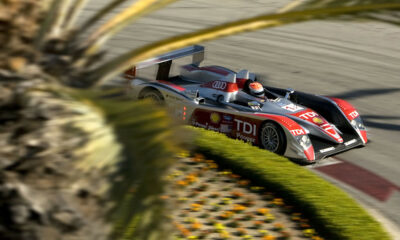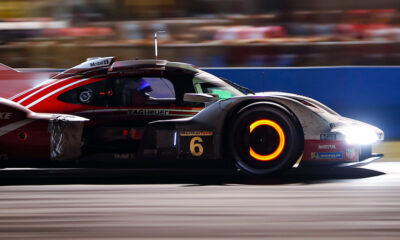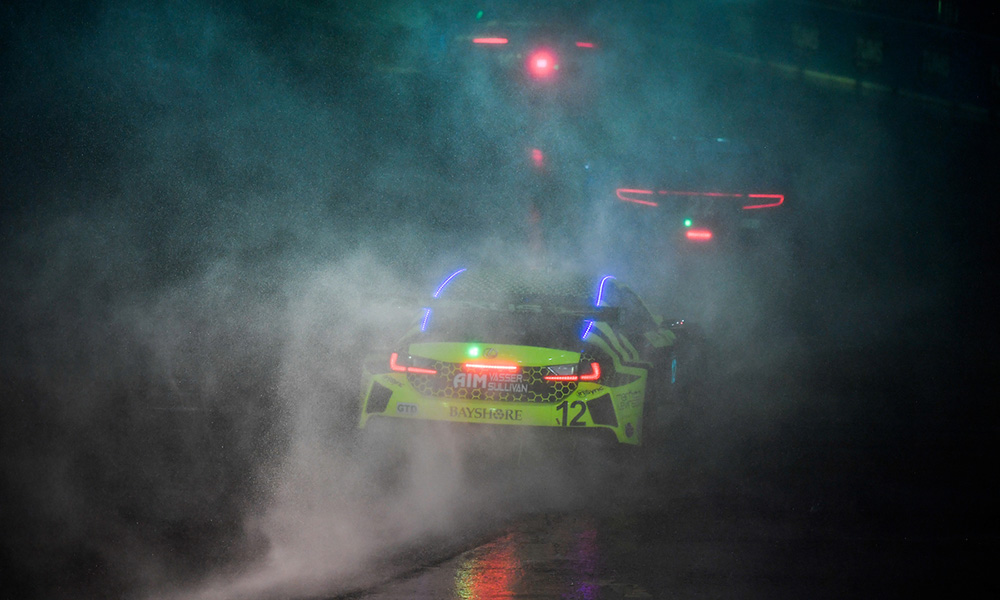
Photo: Michelin
Only 200 miles and five days separate IMSA’s track activity at Charlotte Motor Speedway’s Roval and Michelin Raceway Road Atlanta in Braselton, Ga.
Yet despite the proximity and timing between events, about the only thing in common is some night running.
A Quick Trip to Charlotte
The IMSA WeatherTech GT Teams tested at the Charlotte Roval track for two days in mid-September to get a feel for the circuit and its unique characteristics.
Michelin relied largely on simulations to prepare going into the race, as both the track and series have changed significantly since an American Le Mans Series race there in 2000.
“It’s really tight. It’s like a go-kart track with a car!” said Connor De Phillippi, the BMW Team RLL driver who is also a Charlotte resident.
“The radius of the banking is tighter than Daytona, so that made it more interesting. Marbles built up too, and the GTD traffic was difficult. It was very single line, especially in the second sector. The key going in was to be aggressive, but not too aggressive, in traffic without losing time.”
With only 18 cars entered and only just over 5,000 miles completed, this marked Michelin’s smallest IMSA outlay of this season.
Michelin took just 14 total crew members (six engineers and eight Jackson operational support staff) and brought just under 1,000 tires, including wets, to the 100-minute GT only event.
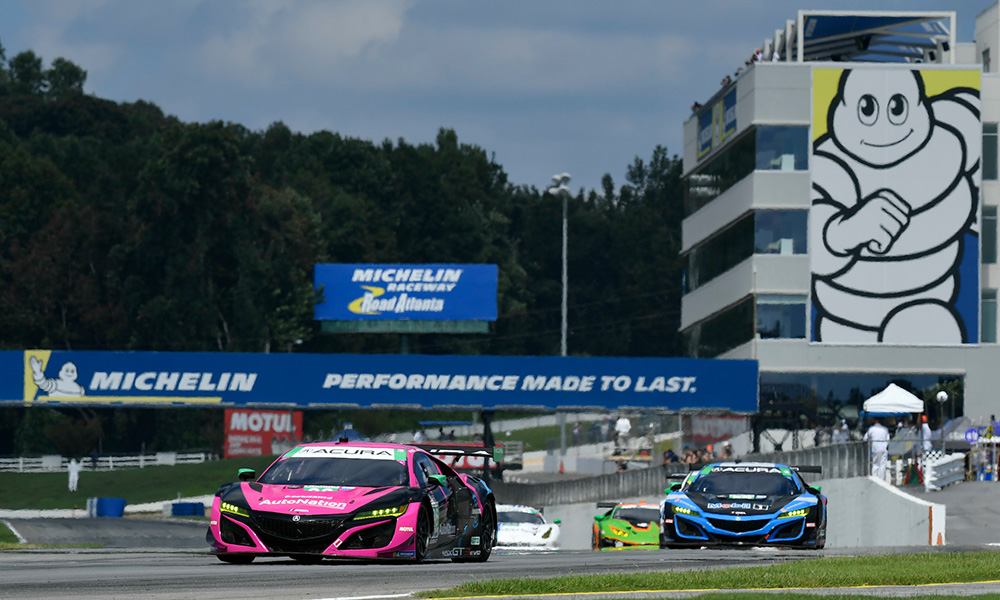
Photo: Rick Dole/IMSA
Return to Michelin Raceway Road Atlanta
By contrast, Michelin has extensive data from decades of experience at the track it now calls home, Road Atlanta.
With several hundred thousand miles run at the track, including a bonus six-hour race weekend in September, the return trip to Braselton comes with the usual busy weekend schedule.
This marks the last weekend this season where all three of Michelin’s IMSA race series will compete on the same weekend.
To accommodate that, 11 Michelin staff and 30 Jackson operations and support personnel will be on site. Michelin will bring approximately 6,200 tires to the track.
The WeatherTech Championship’s 10-hour Motul Petit Le Mans and Michelin Pilot Challenge’s two-hour Fox Factory 120 shift to being the third-to-last, rather than last, races of the unusual season.
IMSA’s Prototype Challenge series concludes its 2020 season with its sixth race of the year.
During the Michelin Endurance Challenge weekend last month, Michelin teams completed nearly 15,000 laps and more than 37,000 miles across practice, qualifying and the pair of endurance races.
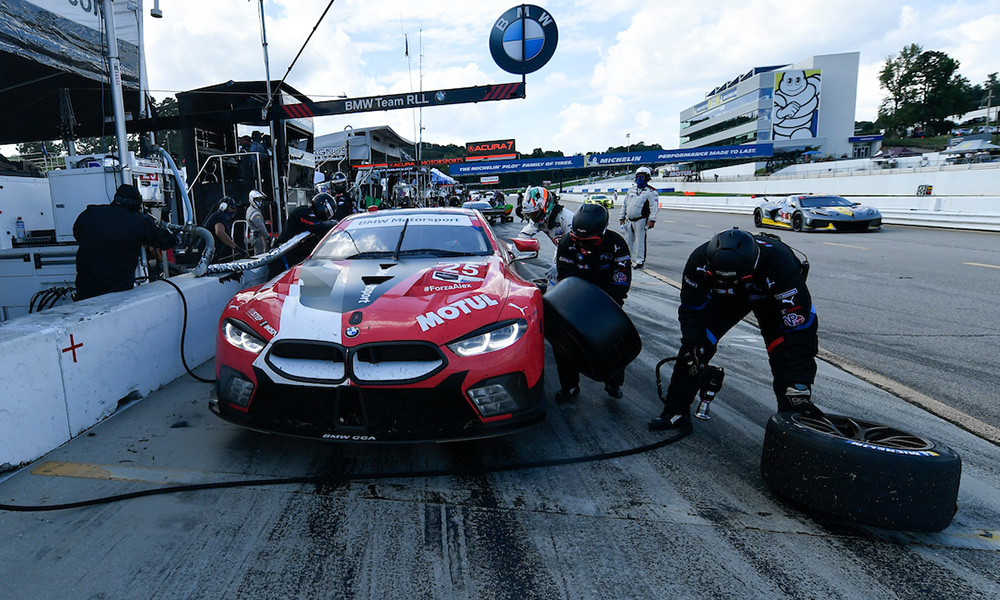
Photo: Michelin
Learning from 6-Hour for 10-Hour
The TireRack.com Grand Prix at Michelin Raceway Road Atlanta featured some heat.
All sessions during the weekend ran with ambient temperatures 80 degrees or higher, and track temperatures ranged from the mid-90s to north of 110 degrees Fahrenheit per Michelin’s engineers.
Drivers and teams sought to learn what they could from the extra weekend but acknowledge the expected cooler conditions, nightfall and any potential rain at Petit Le Mans will differentiate the two races accordingly.
“The six-hour weekend was really hot, and we did well with our tire management there while our competition struggled,” De Phillippi admits. “We had better tire deg. It’ll be interesting to see how we fare in cooler conditions.”
Bryan Sellers and the Paul Miller Racing Lamborghini team return, seeking to extend their lead in the Michelin Endurance Cup.
With the change in conditions from day to night at Petit Le Mans, Sellers noted how much better the track surface is now after some track work done in 2019.
“Tire management in an endurance race is something that plays a part without question,” he said. “Fortunately, here at Michelin Raceway, the Michelins tend to hold on well.
“They did some track work on the back, with patching and sealant. That helped quite a bit. The worst bit for the circuit was Turns 6 and 7 and it’s alleviated a lot of the issues.
“The obvious thing that separates the two races is the night running versus no night running. In the six-hour, the heat becomes more of an issue and how you stagger your drivers the right way.”
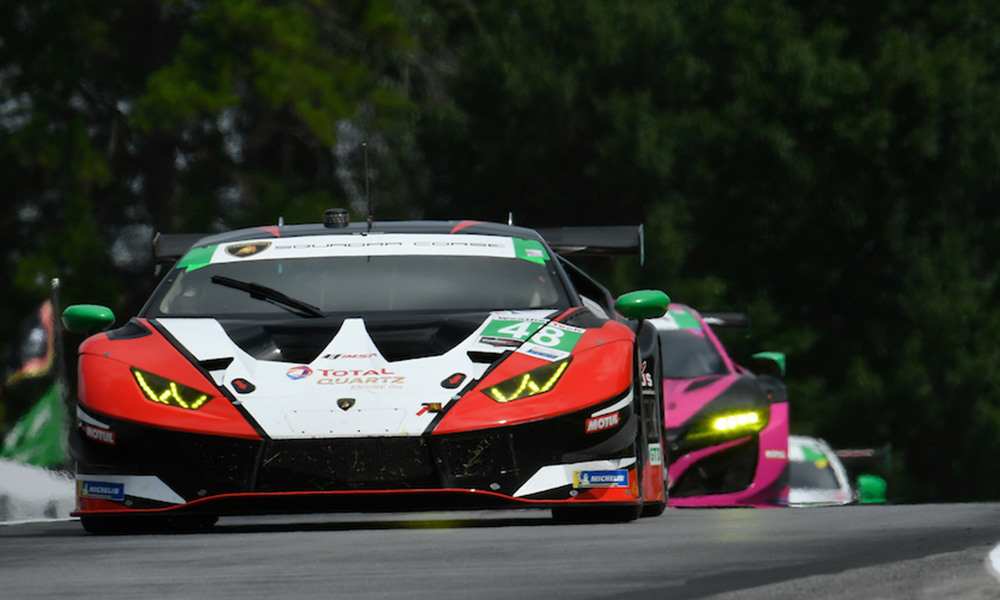
Photo: Michelin
Ironically, teams will spend more e time in night running at Petit Le Mans, an estimated three hours and 45 minutes after sunset, than they did in the entire 100-minute night race at Charlotte.
With the 2018 change to a full 10-hour race length rather than 10 hours or 1,000 miles, the pace and constant traffic, especially at night, are non-stop.
The top three finishers at Petit Le Mans 2019, the No. 31 Whelen Engineering Cadillac, No. 10 Konica Minolta Cadillac, and No. 7 Acura Team Penske each logged 465 laps or 1181 race miles.
DPi points leader Renger van der Zande, who will share his No. 10 Konica Minolta Cadillac DPi-V.R with Ryan Briscoe and returning third driver Scott Dixon, noted how the mindset changes.
“When it’s a sprint race, you want to attack straightaway. For a 10-hour race, it’s much less important to do so,” van der Zande said.
“In a six-hour race, you need to be good on strategy at the right moment. And from the tire perspective, you have to find your way and figure out whether to go a stint or a stint and a half on tires. That helps your track position.
“Strategy-wise, the tires play a big role in how we perform.”




















